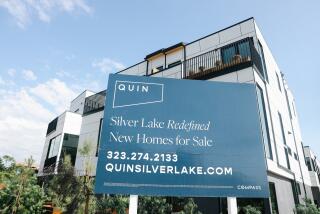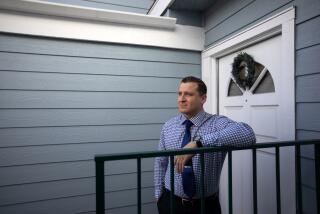Crunching the Numbers to Purchase $175,000 Home
- Share via
How much would you have to pay each month to buy a $175,000 “starter” home in the Southland? How much would you have to earn to qualify for the loan? How big a down payment would you be required to make?
There are no hard-and-fast answers to these questions: Much depends on what type of loan you choose, which lender you’re working with and what interest rate you’ll be charged.
The Times asked experts at the California Mortgage Bankers Assn. to calculate the income requirements and monthly mortgage payment for two hypothetical buyers of a $175,000 home.
One buyer, or couple, would make a 10% down payment of $17,500 toward the purchase price and the second would make a 20% down payment of $35,000.
The buyer making the 10% down payment would need a $157,500 loan. Based on current rates of about 8 1/4%, monthly principal and interest payments on a 30-year, fixed-rate mortgage would be about $1,355.
Because the buyer’s down-payment would be less than 20% of the purchase price, he would also have to pay for a private mortgage-insurance policy that would reimburse the lender for any losses it might incur if it must eventually foreclose.
Monthly premiums for PMI, combined with the cost of hazard insurance, would boost his monthly outlays to $1,401. To qualify for the loan, the buyer would need to earn about $56,040 a year.
Ironically, this same buyer would have to earn even more to get a standard adjustable-rate mortgage.
Until recently, income requirements for borrowers who were willing to take an ARM were less-restrictive than standards for fixed-rate borrowers because initial payments on adjustable-rate loans are lower.
Although introductory rates on ARMs are about 6 3/4%--roughly 1 1/2 points below rates on fixed loans--new rules introduced by the Federal National Mortgage Assn. require lenders to qualify borrowers who make a small down payment at a rate that’s two percentage points higher.
As a result, the borrower would have to earn $60,996 to get the loan.
Although his borrowing ability will be based on an 8 3/4% rate, his monthly payment will be based on the note’s actual 6 3/4% rate. So, initial monthly payments on the ARM would total $1,363, including the cost of insurance.
That’s $38 a month lower than a fixed-rate repayment schedule would require.
The buyer who makes the 20% down payment of $35,000 would need a $140,000 mortgage. Monthly payments on an 8 1/4%, 30-year fixed-rate loan would be $1,225, and no PMI would be required.
To qualify, the borrower would need to earn $50,976 annually.
If he instead opted for an ARM, his monthly payments would start at $1,129 and he’d have to earn $46,152 a year to meet Fannie Mae’s qualifying standards. Again, no PMI would be necessary because he is making a sizable 20% down payment.
If all these figures make you feel as if you’ll never be able to buy a home, take heart: The mortgage-banking trade group that did the calculations used relatively conservative lending guidelines. Many financial institutions don’t follow such strict rules.
More to Read
Inside the business of entertainment
The Wide Shot brings you news, analysis and insights on everything from streaming wars to production — and what it all means for the future.
You may occasionally receive promotional content from the Los Angeles Times.










